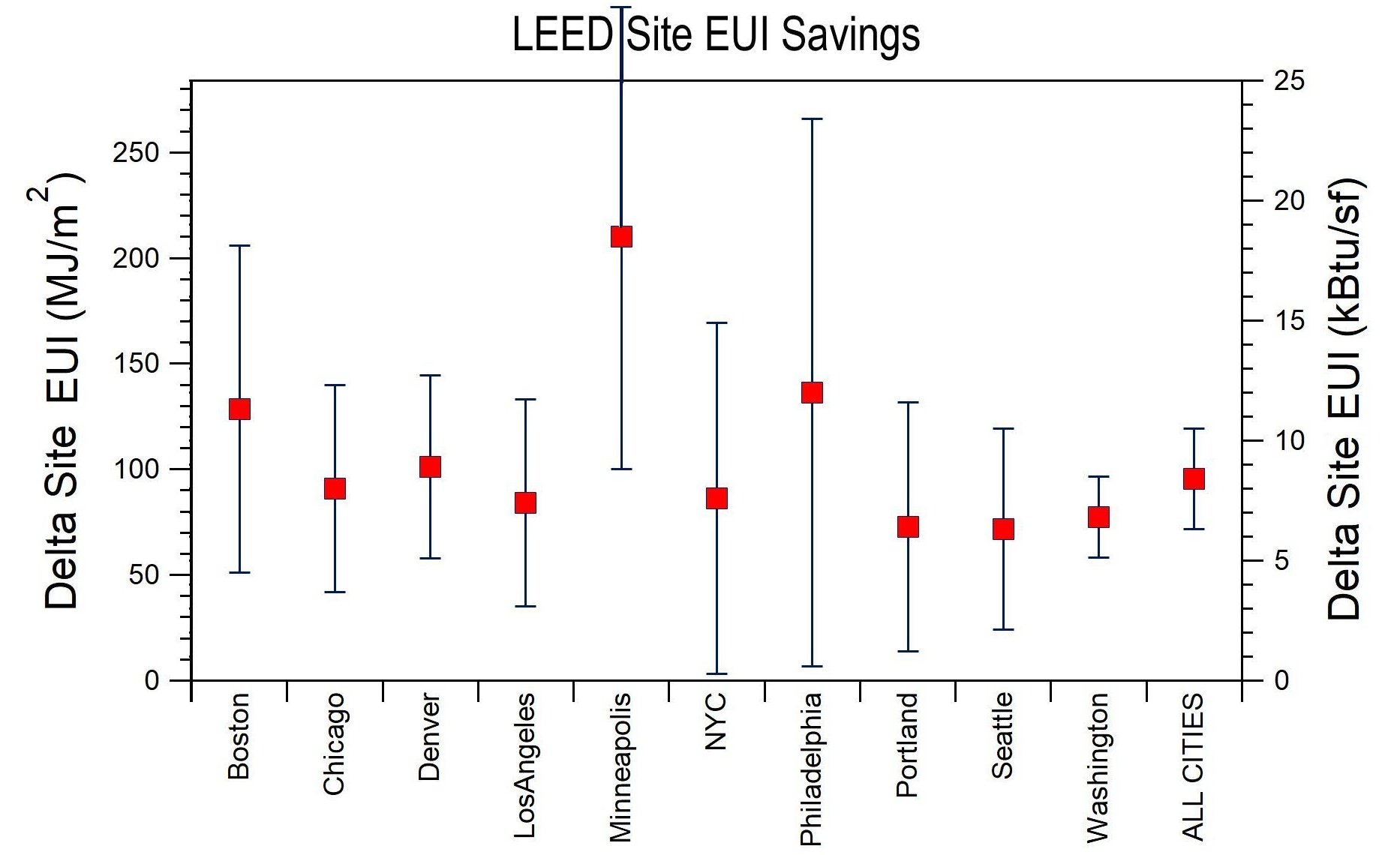We have completed the largest peer-reviewed study of measured whole building energy use for LEED-certified commercial buildings ever published. Our paper, “Energy and Greenhouse Gas Savings for LEED-Certified U.S. Office Buildings” can be downloaded from the web site of the open access journal Energies. The abstract is found here.
Our study is based on public municipal building energy benchmarking data from 10 US cities for the year 2016. The entire dataset contains annual energy use and energy-related greenhouse gas emission for over 28,000 properties, of which about 4500 are classified as office. By cross-referencing the benchmarking data with the USGBC LEED Project Database we were able to identify 551 office buildings that were certified in LEED systems that address whole building energy use. These systems were LEED for New Construction (NC), Core & Shell (CS), and Existing Buildings (EB). We have compared the 2016 site energy, source energy, electric energy, non-electric energy and greenhouse gas (GHG) emission of these LEED-certified offices other offices in the same cities in order to understand energy savings associated with LEED certification.
In this post I will talk about the site energy savings observed for LEED offices.
LEED offices in every city were found to use less energy on-site than non-LEED offices, adjusting for size, of course. Except for Washington DC, however, the variability in LEED performance was so large that these savings were not statistically-significant at the usual, 95% confidence level. In aggregate, however, the savings were statistically significant. The results are shown in the figure below.
The red symbols indicate savings in site EUI by LEED office buildings relative to other office buildings in the same city. The error bars represent the 1-sigma standard errors in these savings. In aggregate (ALL CITIES) and in Washington DC the savings are two standard deviations or more above zero. In other cities the savings have larger error. In aggregate the LEED site energy savings is 8.5 kBtu/sf, which represents an 11% savings relative to the site EUI for non-LEED offices. These results are consistent with those we have reported earlier based on 2015 data for Chicago.
It should be noted that these savings are substantially lower than the 30-35% energy savings frequently asserted for LEED buildings – but are nonetheless positive and significant.
I will discuss savings in other metrics in upcoming posts.


Carrier and Trane are now offering CLEAN BUILDING service. NORESCO is now involved with Carrier
LEED and its spin off WELL BUILDINGS ( https://www.wellcertified.com ) and FITWEL (https://fitwel.org/ )
seem to be led by former USGB people and promoted by LEED APs with no engineering experience. All theory and no results.
I expect LEED litigation in the future.
Richard G. Lubinski
AEE Fellow
CEM, CEA, CDSM, CSDP, CEMSC, BEP
Think Energy Management LLC
317 Rainbows End
Aurora, Ohio 44202-8031
C 330-283-4604
rick@think-energy.net
http://www.think-energy.net